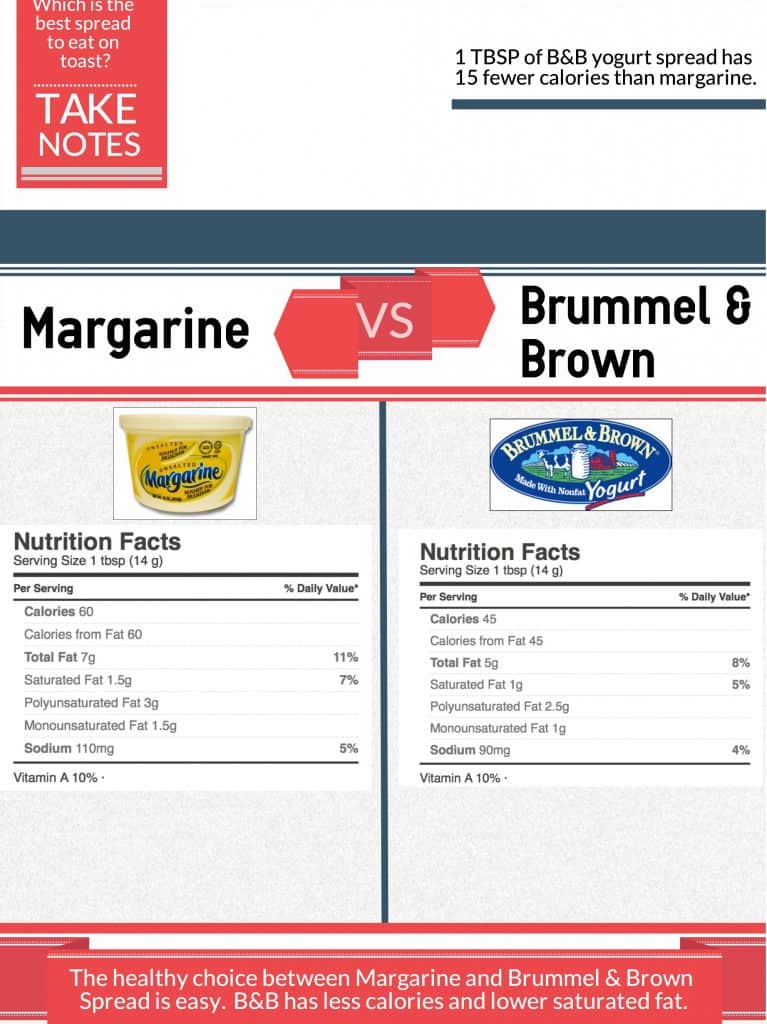Butter has been vilified over the years. Are there any healthier options? This article discusses a few. One of the questions I have been asked on more than one occasion is whether I should use butter or not. I am a little different than most physicians, and I disagree with dietitians on this one. I think butter is ok. It is a heck of a lot better for you than the margarine that used to have trans fats. So what should I put on my toast?
Toast is one of my favorite foods for breakfast. Toast with butter or peanut butter is a great way to start your day. If you choose bread that is full of fiber, it will keep you full all morning. Follow the bread with 2-3 glasses of water, and stay full and hydrated. I have a few suggestions, but that is another story.
Do I eat butter when I am trying to lose weight? The simple answer is no. It has 100 calories per tablespoon and has more calories and saturated fat than the softer fats. So what do I eat on my bread? I eat either peanut butter or Brummel & Brown spread.
What is Brummel & Brown (B&B) spread? It is a mixture of 10% Nonfat Yogurt and 35% Vegetable Oil Spread. Yes, it is made with yogurt. It looks and tastes like butter.
Butter:
- The pros:
- Butter is more natural than margarine. According to 21 U.S. Code 321a, “For the purposes of the Food and Drug Act of June 30, 1906 (Thirty-fourth Statutes at Large, page 768) “butter” shall be understood to mean the food product usually known as butter, and which is made exclusively from milk or cream, or both, with or without common salt, and with or without additional coloring matter, and containing not less than 80 per centum by weight of milk fat, all tolerances having been allowed for. (Mar. 4, 1923, ch. 268, 42 Stat. 1500.)” This means that added ingredients are limited to salt and coloring agents. Some margarine contains flavoring agents, color additives, emulsifiers, preservatives, sweeteners, and water.
- Butter is rich in the most easily absorbable form of Vitamin A necessary for thyroid and adrenal health.
- It contains lauric acid, which is important in treating fungal infections and candida.
- Butter has fat that helps the body absorb many of the healthy nutrients found in vegetables. It especially helps absorb carotenoids, effective disease-fighting antioxidants present in vegetables.
- The presence of lecithin in butter helps to enhance cholesterol metabolism.
- Butter eases the absorption of essential vitamins (A, D, E, and K).
- Vitamin D present in butter helps in the absorption of calcium, which shields teeth against decay.
- It contains arachidonic acid, which is vital for brain functioning.
- The cons:
- Butter can increase levels of “bad” cholesterol and increase the risk of cardiovascular disease.
- Butter has more calories than margarine or yogurt spread.
- Margarine contains higher levels of healthy polyunsaturated and monounsaturated fats, and some margarine are fortified with plant sterols, which have been shown to lower blood cholesterol levels by 10 percent (you need to eat one tablespoon of sterol-enriched spreads a day).
- Butter contains milk fat and more readily spoils than margarine.
You can click on the above image to see a larger image comparing the nutrition between Margarine and Brummel & Brown Spread. The B&B has slightly fewer calories, and I personally like the taste of it better.
You can click on the above image to see a larger image comparing the nutrition between Butter and Brummel & Brown Spread. The B&B has slightly fewer calories, and I personally like the taste of it better.
The Bottom line: So which did I choose? I chose B&B spread. It tastes like butter and has half the calories. It is made with dairy, so sorry, vegans. Find one you like and can tolerate.











Be the first to comment on "Nutrition Tidbit #1: Butter or a Substitute?"